Love in the Time of Prompting: SHUMON BASAR and Y7’s CORE+LORE
|Phillip Pyle
Lorecore (noun): An era, belonging to digital capitalism, characterized by people’s existential need to storify themselves at the very moment global narratives collapse in an unprecedented manner.
Core+Lore is a film collaboration between 032c Contributing Editor and writer Shumon Basar and the audiovisual production and theory duo Y7 (Hannah Cobb and Declan Colquitt). The last installment in Basar’s “Lorecore Trilogy,” a series developed during a writing residency at Zora Zine, the film embraces AI on the heels of a period of heightened AI hysteria.
The eight-minute film takes its inspiration from the laws and neologisms of “Lorecore,” which Basar outlined in the first two parts of the series. Created by feeding a film-script into text-to-content AI models, the result is replete with Instagram lives, images of neural-generated beaches, robotic voices, and an ingeniously falsified quote by Aristotle. The story follows the final contestants in the internet dating show “Lore Island” while they discuss desire, the death of the future, and the warmth of the feed.
Phillip Pyle spoke with Basar and Y7 around the project’s release about the creative possibilities of AI, and the space that love, yearning, and sex occupies in digital culture.


PHILLIP PYLE: I wanted to talk about the original definition of “Lorecore”—and if you’ve seen any recent manifestations of it in digital culture?
SHUMON BASAR: The thing that comes to mind is what I would call “The Genealogy of Girl Lore.” The recent history of this starts just a few weeks ago with the notion of the “girl dinner.” After girl dinner, we had “girl math.” Then came “lazy girl jobs,” which has been a really big thing. Alex Quicho published her piece in Wired called “Everyone is a Girl Online,” which channeled so much of the girlcoded meme energy I’ve felt these few months. Two things come to mind. One is this notion of “Permainfancy”—an inability, or refusal, to properly adult. Then there’s the zeitgeist of self-diagnosis culture—this idea of “girlness” as a syndrome. One of our characters in the film says, “Anxieties can be hot!” So too can pathologies, if presented in a particular way. And then Taylor Swift admits she’s never seen a therapist because, “I just feel very sane.” This is notable because Tay seems to be a kind of apogee of a certain girlness that is looked up to—but here she is explicitly refuting the notion that she’s a product of therapy culture. That’s advanced Lorecore.

PP: Could you talk more about how theory informed this creative prompting?
DECLAN COLQUITT: I think that the prompt as a unit of information is fairly new and it speaks to the idea of the Platonic ideal. In terms of the way that ended up relating to aesthetics, we felt with #corecore that there’s a tendency towards maximalism.
HANNAH COBB: When you’re trying to explain and communicate what it is you want an AI to give back, you end up writing a really long list of words that don’t necessarily go together. It’s not always a coherent sentence. You’re forced to be efficient because you don’t want to complicate and confuse the AI. Also, with a lot of text-to-image prompting, you have to know your stuff about cameras; camera angles, lenses, lighting, and have a level of knowledge of specific terminology. It’s a weird contradiction in that it’s this new “accessible” way of making images that shouldn’t necessarily require a preexisting skill or training, but then, to be able to refine it, you have to know what ISO would be best or which shutter speed would produce the desired outcome.
SB: If you want ChatGPT or Google’s Claude etc. to answer a question that they’re programmed not to answer on moral or ethical grounds, you just ask the bot to LARP [Live Action Role Playing] as someone specific. The minute they do that, it’s like you’re surreptitiously getting them to step outside those very strict guardrails. It’s a way of penetrating the defenses. This kind of sigma prompting allows one to access something hidden. Promptcore reasserts language’s primacy over all other modes of articulation. As Hannah was saying, it produces or elicits a new use of language that, in a way, is—to use that McLuhan phraseology—feedback and feedforward with the machine. You do something, it’ll react to it. Nope, that’s not quite what I wanted. So you have to feedback then feedforward. Most of us can’t code. How many of us will learn to properly speak machine?
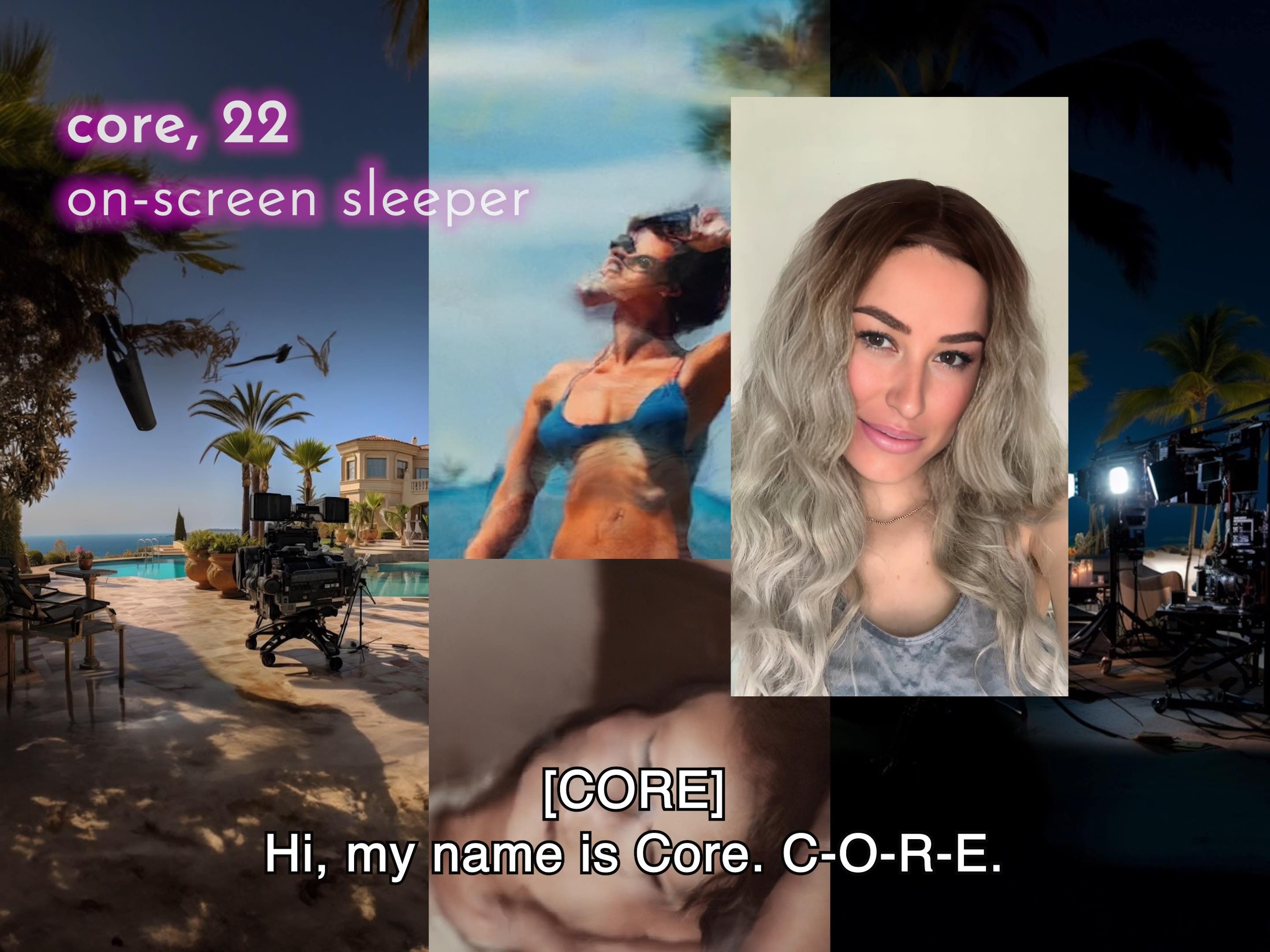
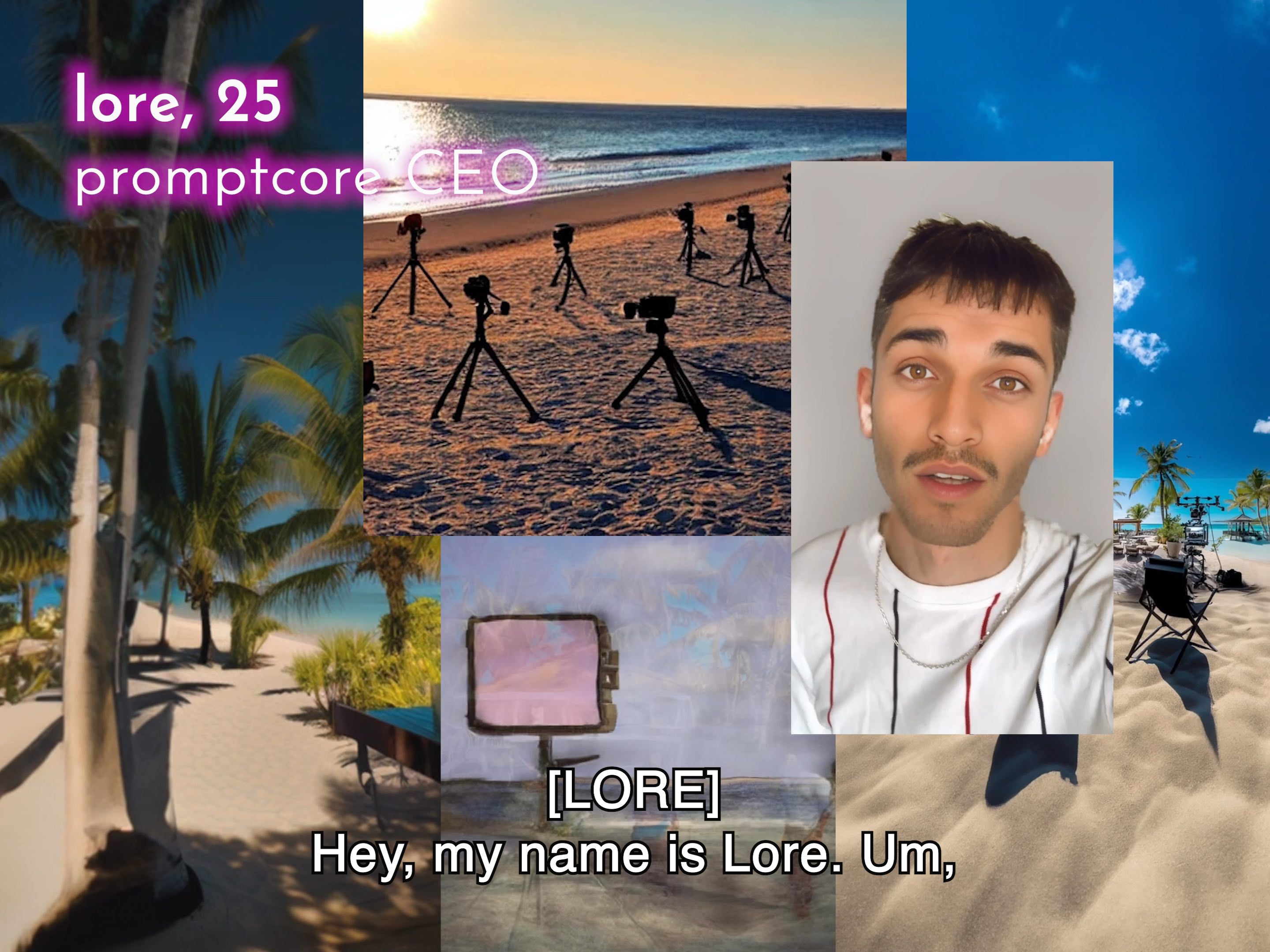
PP: The piece addresses themes of desire and love. What do you think happens to love and desire when they’re placed within technological limits?
SB: I think about the feed a lot—while being inside the feed. One of my Lorecore lexicon entries is “Epistemerotica,” which means “the sexual pleasure of accruing vast amounts of useless information, opinion, trivia, and knowledge by being very online.” The feed today is very much like the river the ancient philosopher Heraclitus famously talked about. He said, “No (wo)man ever steps in the same river twice, for it’s not the same river and he’s not the same (wo)man.” You could change the word “river” to “feed” and it works just as well today. Love and desire are located in the feed, and the feed is fueled by desire and love.
For anybody who’s extremely online, when the Internet shuts down and stops working completely, you’re going to shut down with it. You’re going to have to face the unimaginable terror of having to go outside and touch actual grass. It reminds me of this fantastic moment from Werner Herzog’s documentary on making Fitzcarraldo where he’s in the jungle and he dryly pronounces, “Nature here is vile and base. I wouldn’t see anything erotic here. I would see fornication and asphyxiation and choking and fighting for survival and growing and just rotting away. The trees here are in misery. The birds are in misery. I don’t think they sing. They just screech in pain.” At the end of our film, the two protagonists are now faced with each other without the mediation of their devices, and of the feed. It makes them feel like, “Adam and Eve at the end of the end of the world.”
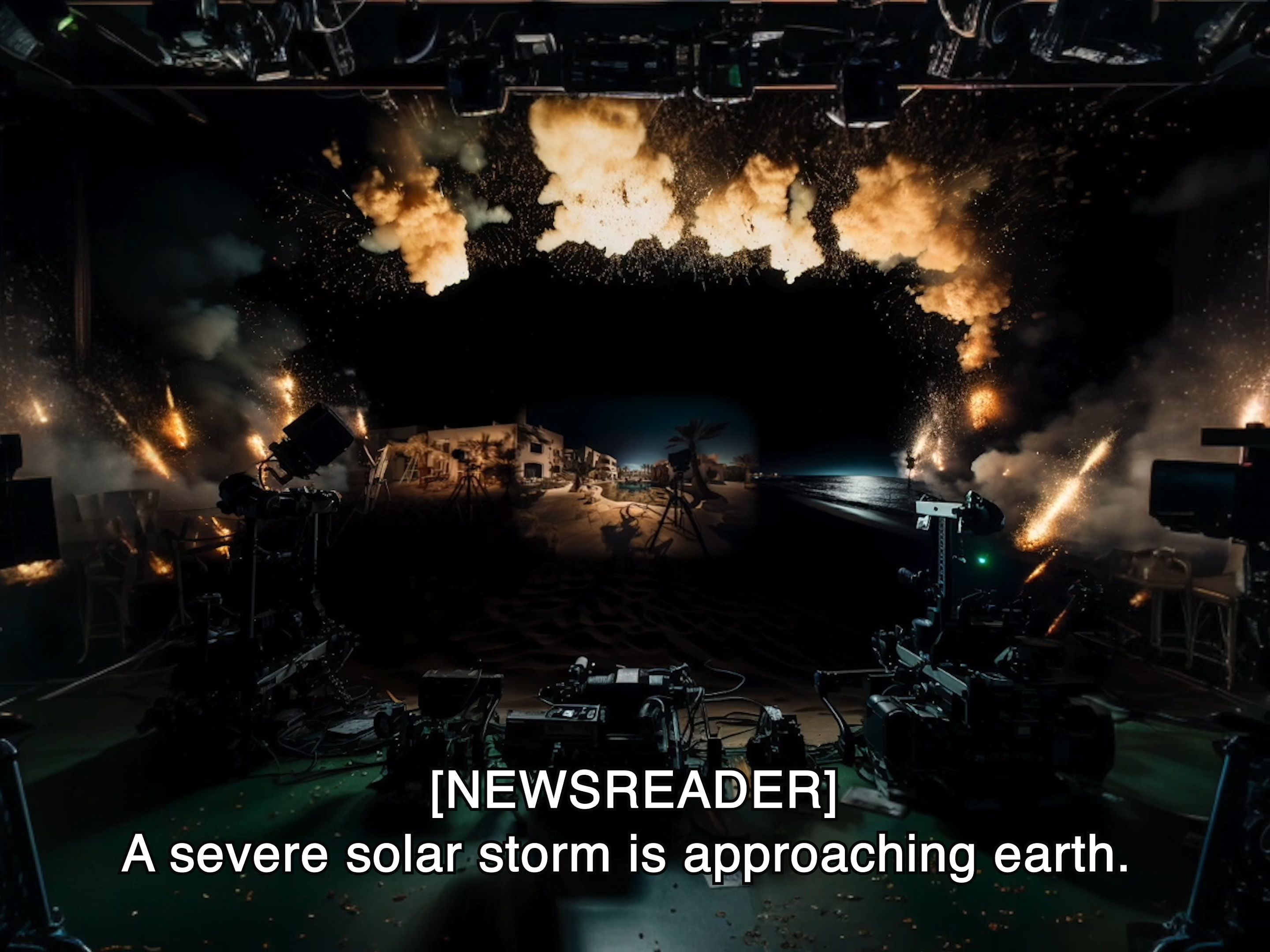

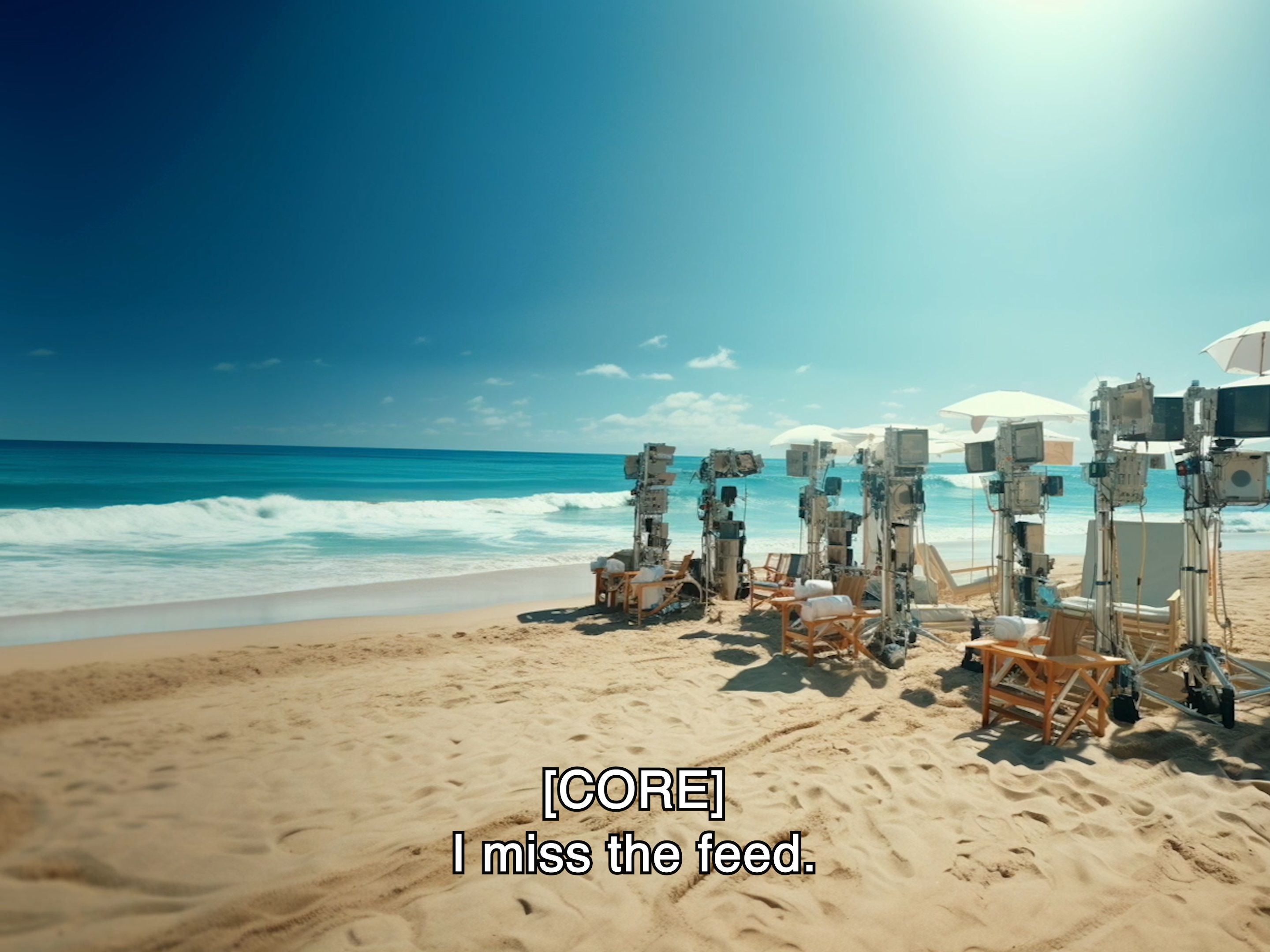
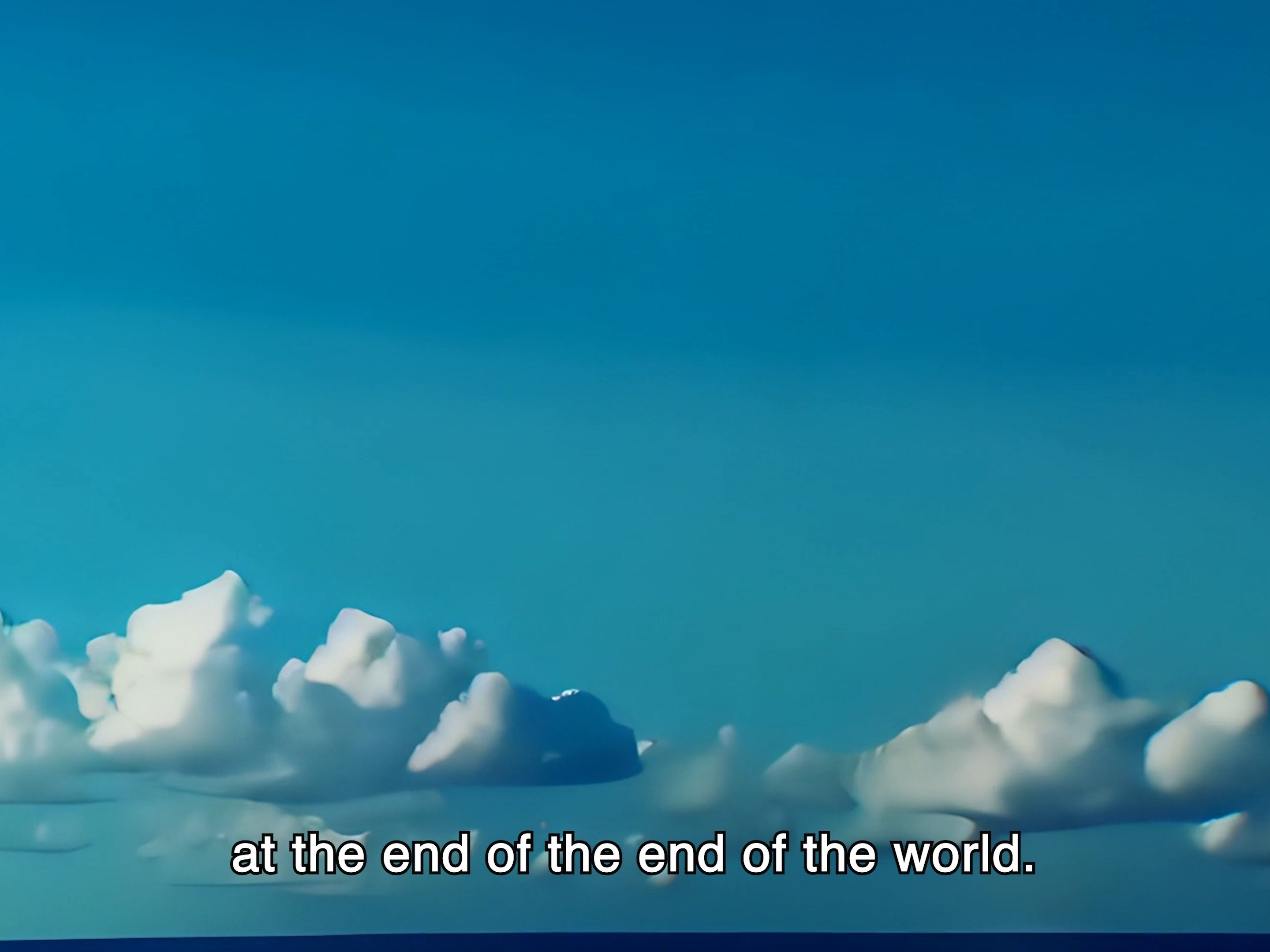
PP: I notice with even the most post-ironic meme pages that yearning is one of the only sentimental emotions you can still confess. What do you make of yearning’s position on the internet?
DC: Yearning videos are something we came across in research for #corecore. #corecore started out with its intentions of a nonsensical delirious process of unthinking and using media as this digital dérive. However, this delirium quickly gave way to this aphoristic, sentimental yearning.
HC: When we first met, you had screenshots of YouTube video comments that you placed under the umbrella name “YearnTube.” They tended to live in the Shoegaze corner of YouTube and were mainly attributed to Slowdive videos. The comments underneath these videos were on another level. It’s yearning times a million. They’d write, “When I’m listening to this song, I’m back in a field smoking a joint with the love of my life. I wish I was dead.” There’s something to be said because it’s this place where people can go under an alias and divulge these wildly cringe sentiments.
DC: I think that yearning is maybe cringe but with “Yearncore,”—when you make yearning yearn-ier and really just take it there—you’re onto something.
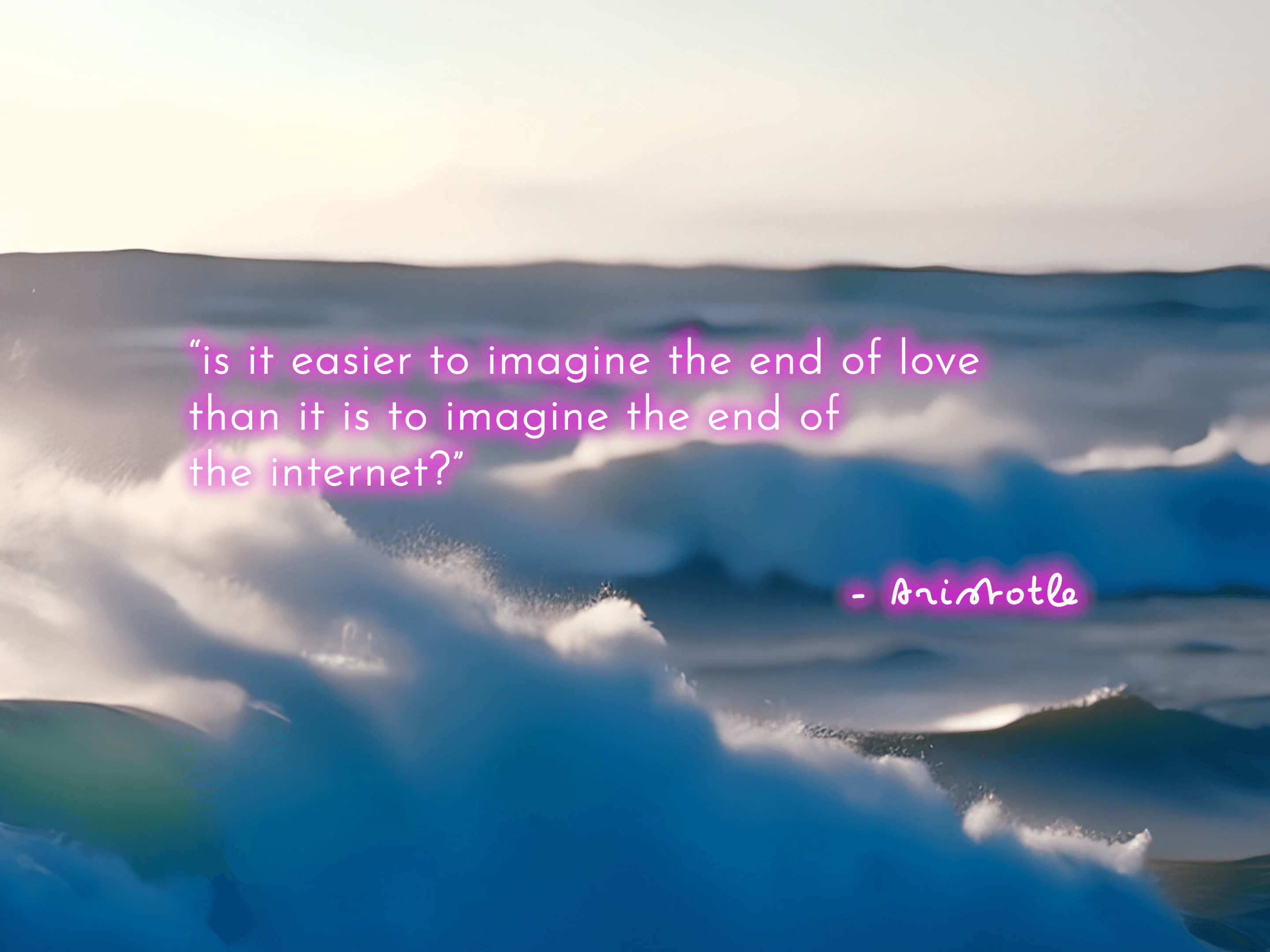
PP: What makes it sexy to be both terminally online and to have a refined theoretical language?
SB: Today, instead of “Live, Laugh, Love,” it’s something more like “Live, lols, LARP” for Gen Z and beyond. You see them taking the new opportunity to take down the giants of philosophy and theory, who were mostly august white men throughout the 20th century. That has to do with trying to usurp hegemonic power. Well, “how exactly do you do that?” Using humor, comedy, and lols. All of that is also a coping mechanism. So, these two things are happening at the same time: iconoclasm and barely coping. And then, I do think there’s definitely something erotic going on in “Theorygram.” There is a genuine lust for people like Hegel and Žižek. The last line of Susan Sontag’s essay “Against Interpretation” (1966), says, “instead of a hermeneutics, we need an erotics of art.”
This is why the backdrop for our film, “Core+Lore,” is a dating show. It’s clearly an homage to Love Island. I’ve noticed that good-looking people are often jealous of intelligent people. And the reverse is also true. Theorygram is a good example of where the libido, sublimation, and horniness find a channel other than the standard trope of naked bodies. That invokes another one of my favorite neologisms, which is “Horny-Sad Hell,” which refers to, “a discomforting paradox, where unrequited horniness gives way to sadness, and the only way to exit said sadness is to try and feel horny.” To me, Gen Z’s relationship to theory is caught in that eternal paradox between feeling horny and feeling sad. It goes back to what Hannah and Declan were saying about yearning.
DC: I think that the meme admin and the cultural theorist occupy a similar space. The CCRU, for example, stayed adjacent to jungle and emergent EDM culture, and cultural theorists must, if they’re trying to diagnose what is happening, try and position themselves near the sources of production. I think that if you’re going to operate and diagnose culture, then being a meme admin is a great place to start.

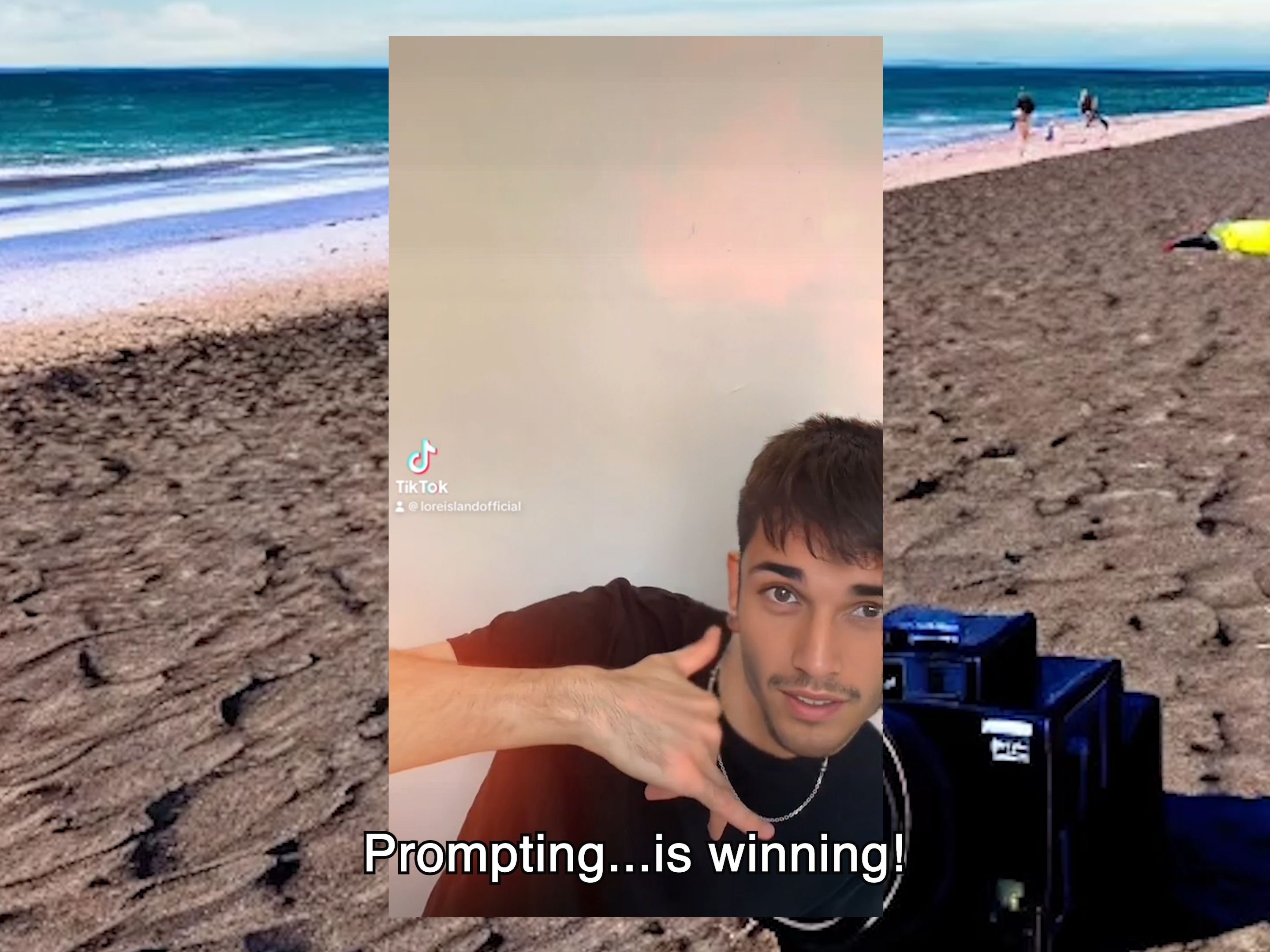
Credits
- Text: Phillip Pyle
- Photography Stills: Y7
Related Content
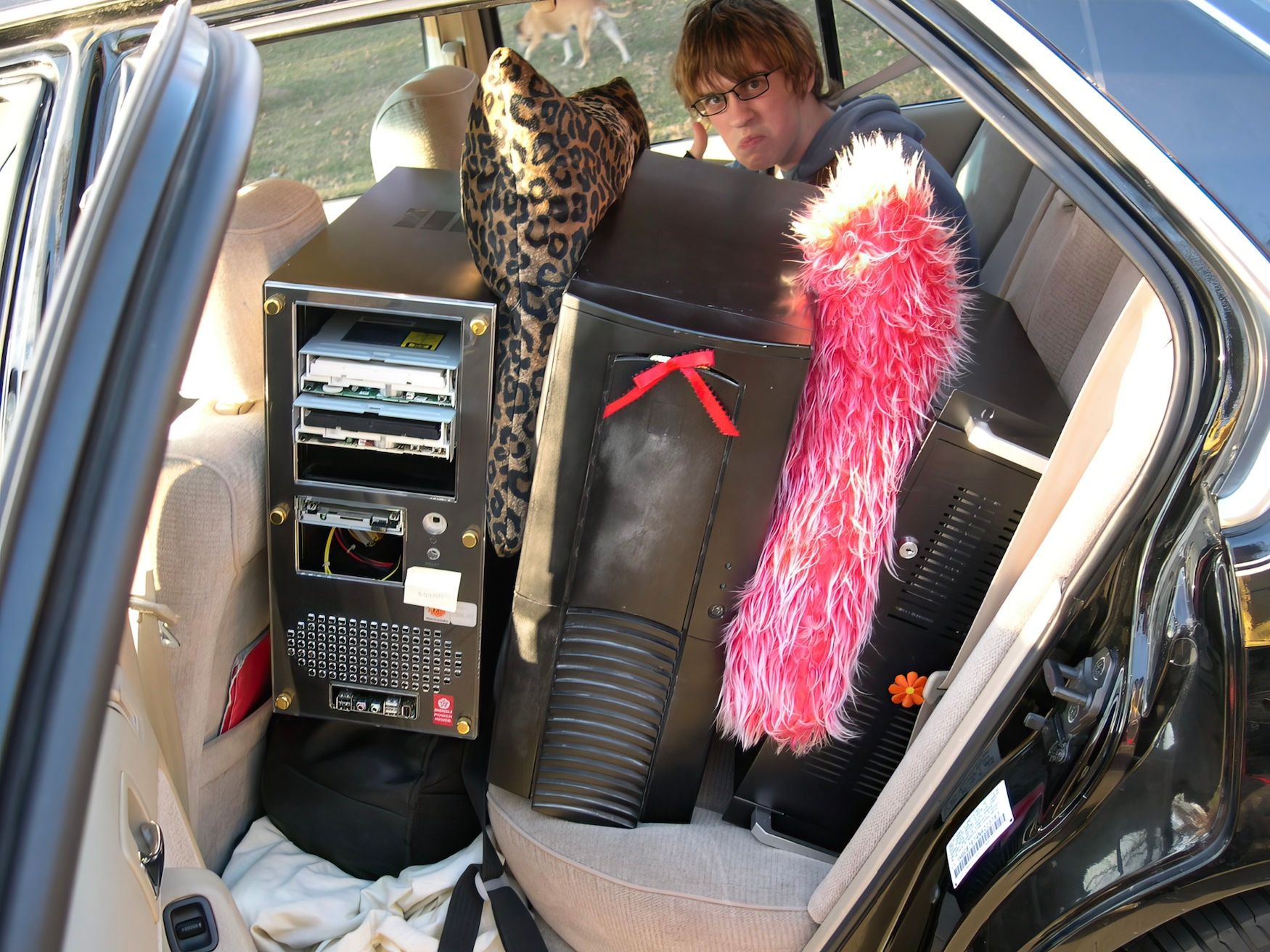
An Internet the Size of a Room: Berlin Review

An Analysis of The Backrooms—Also Known as the Internet's Horror Rooms

Weaponized Irony: A Roundtable on Trolling and Politics

Why Not End It Here, Right Now: HIDEO KOJIMA

Digital Alchemies Resurrect the Dead

ARIA DEAN Life World
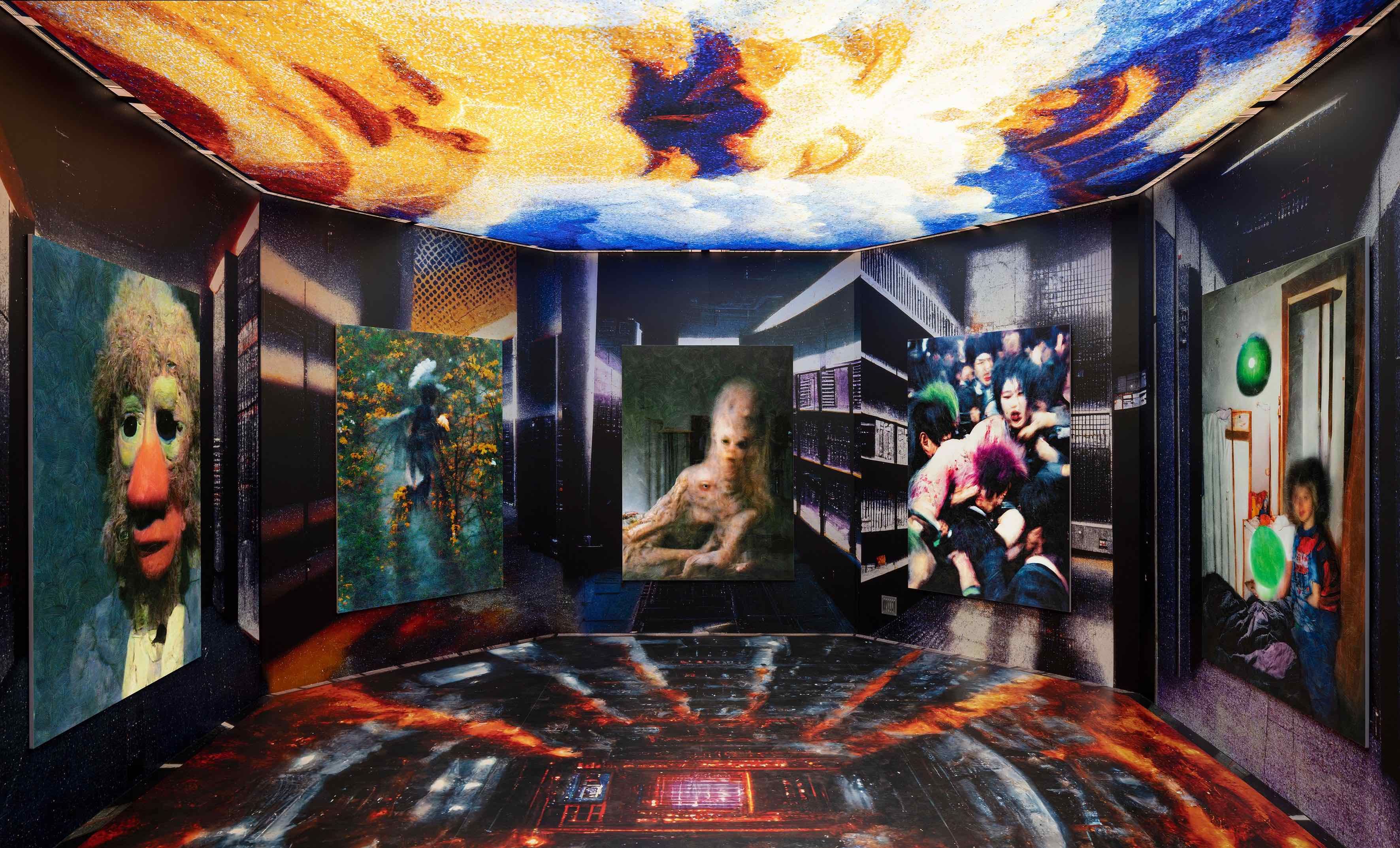
Finding Romance in the Grotesque: JON RAFMAN

ON MESSAGE: MATT LAMBERT and ERIKA LUST